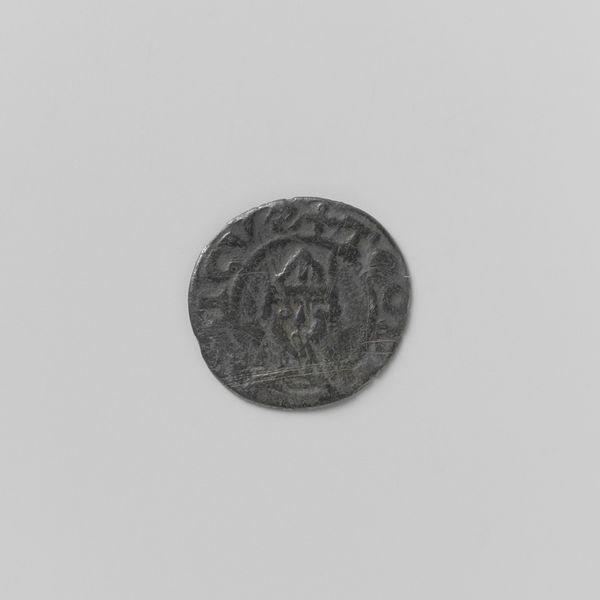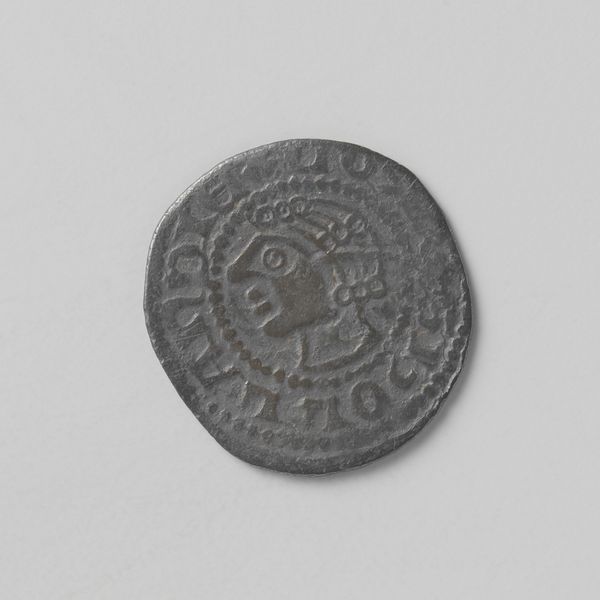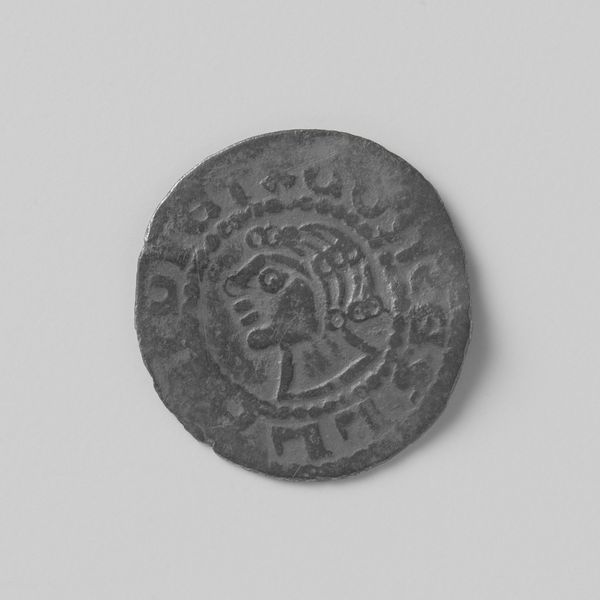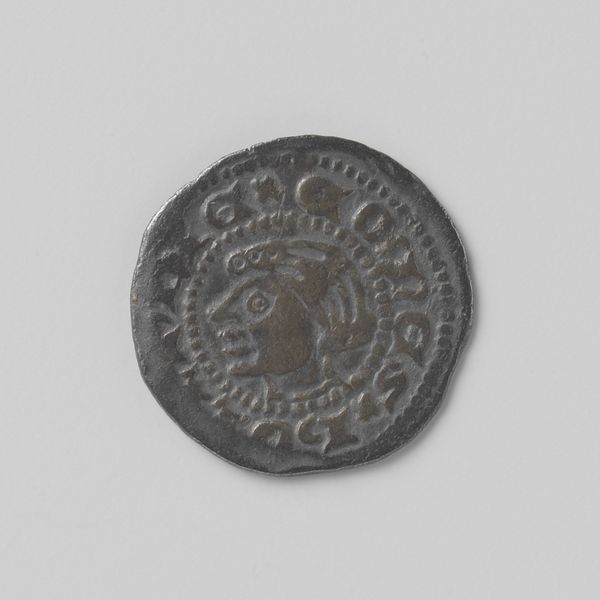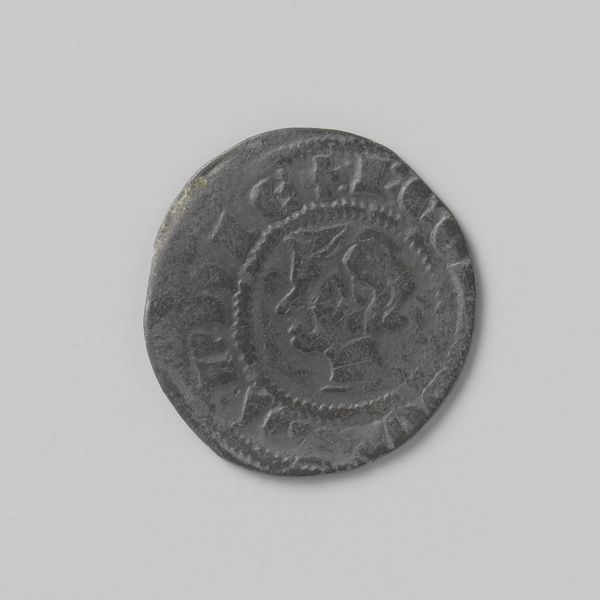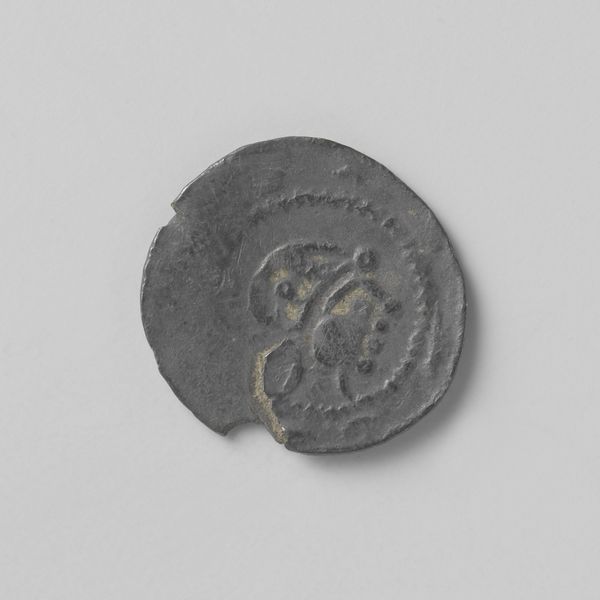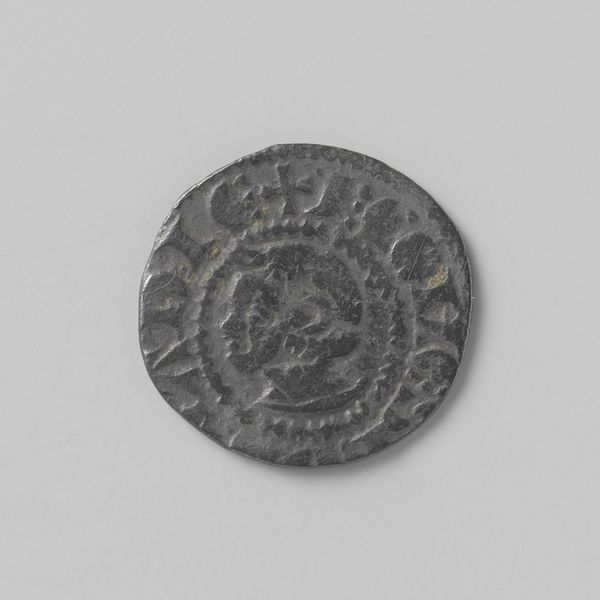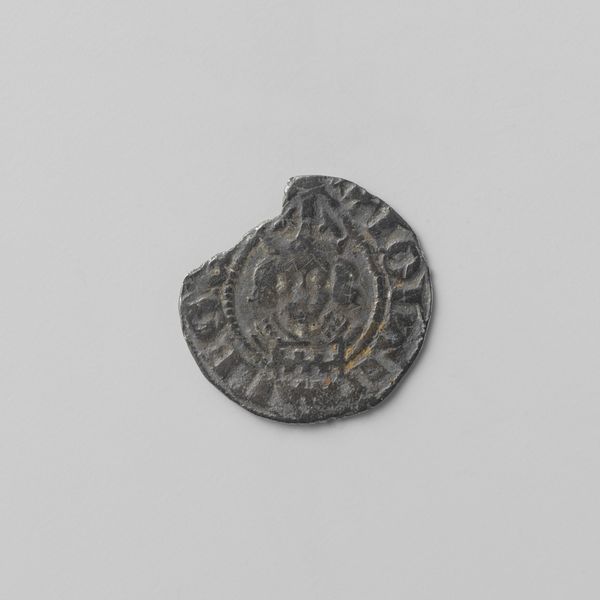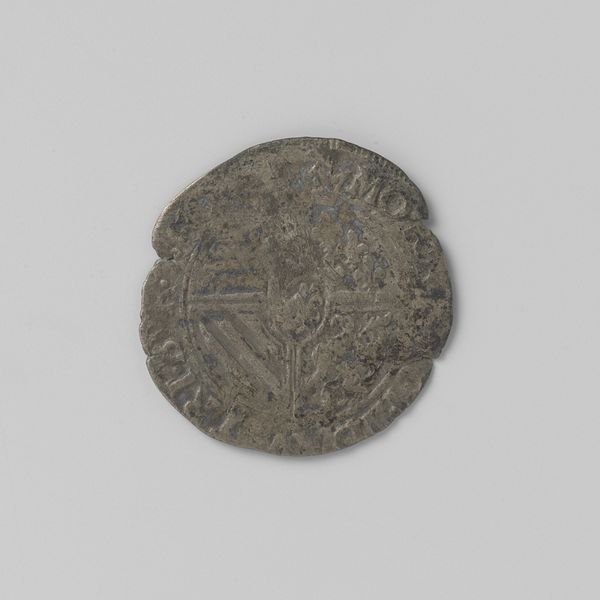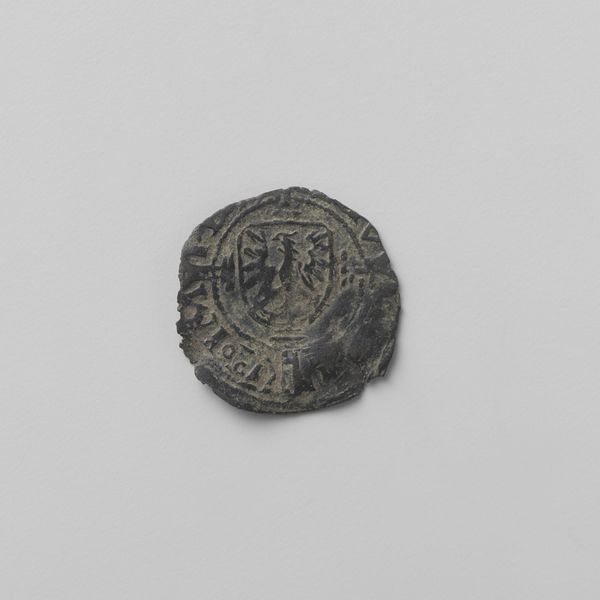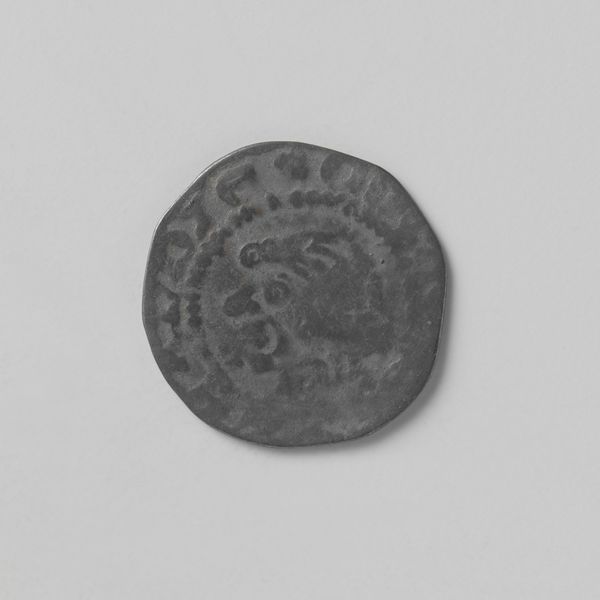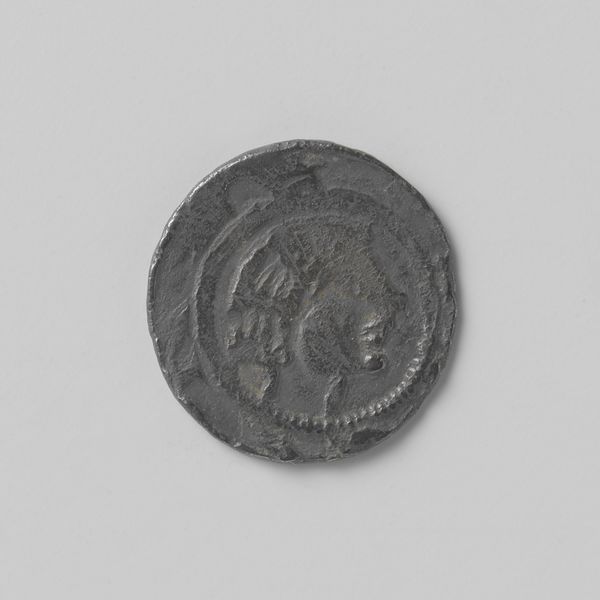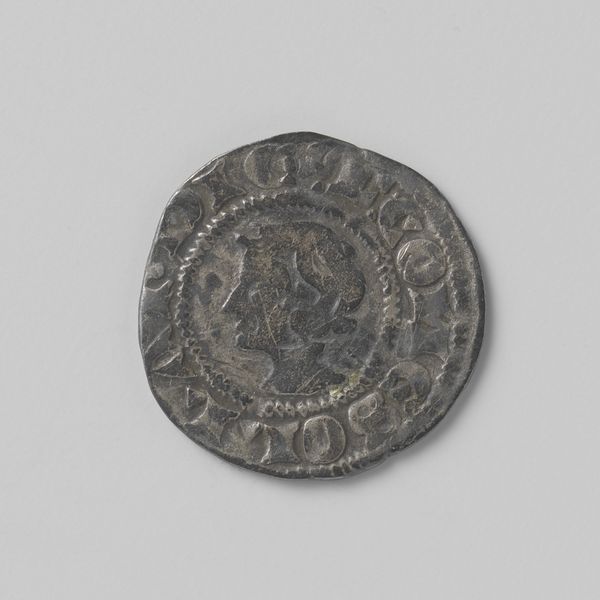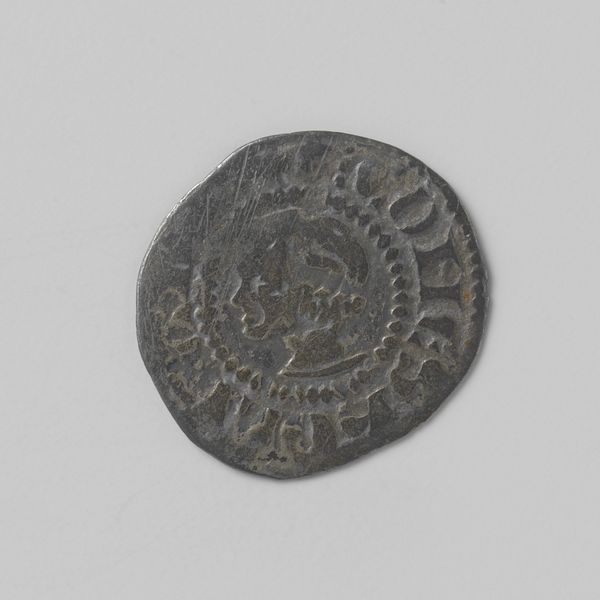
Hollandse penning van Floris V, 1256-1296 1293 - 1296
0:00
0:00
florisvgraafvanhollandenzeeland
Rijksmuseum
metal, sculpture
#
portrait
#
medieval
#
metal
#
romanesque
#
sculpture
#
history-painting
#
miniature
Dimensions: diameter 1.3 cm, weight 0.48 gr
Copyright: Rijks Museum: Open Domain
Editor: So, here we have a Dutch coin featuring Floris V, dating back to between 1293 and 1296. It's quite small, made of metal, and you can see the wear of centuries. What do you notice when you look at it? Curator: What strikes me is how this tiny object carries immense historical weight. Coins were not just currency; they were potent propaganda tools. Consider the political and social context: late 13th century Holland, a region asserting its power. The image of Floris V isn’t merely a portrait, it’s a statement of authority. Editor: Propaganda on such a small scale! How effective could that be? Curator: Mass communication as we know it didn't exist. Most people wouldn't ever see Floris V in person. These coins were distributed far and wide, subtly reinforcing his image and reign with every transaction. Who controlled the imagery, controlled the narrative. Editor: That makes me think about how much power rests with institutions and political figures selecting what gets shown even today. It makes you wonder, what's the 'coin' of our era? Curator: An interesting question indeed. The principle remains relevant – what imagery circulates, and whose interests does it serve? Social media? Political posters? The history of art reminds us to critically examine these visual languages. Editor: Looking at this, I never really considered coins as more than just money, but understanding their purpose as tools of communication throughout history is interesting. Thank you. Curator: Absolutely, and remember that every artifact offers a glimpse into a specific socio-political time. Keep asking questions.
Comments
No comments
Be the first to comment and join the conversation on the ultimate creative platform.
